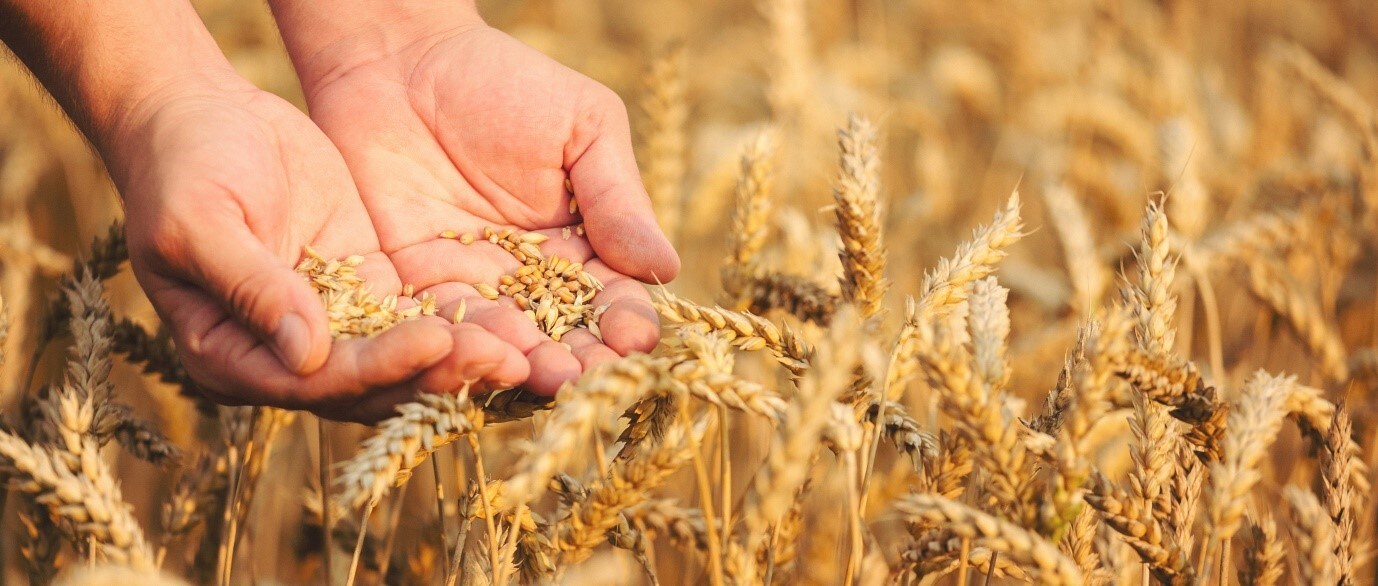The amount of topics that could fall under this heading is vast. I often joke that there is little in this world that causes more debate than politics, parenting and nutrition. While we could spend pages on these interesting and often controversial topics, we’ll touch on just a few of the big ones here:
Grains are evil.
As hyperbolic as that statement is, it does encompass the sentiment of many individuals and of many marketing campaigns. The grain-free movement in pet food aligns closely with the widely successful gluten-free marketing campaign in human nutrition. The “free from” industry in human nutrition is a massive, global 36 billion USD industry that derives its appeal not from what is in the food, but rather what isn’t (Euromonitor International 2018). Not surprisingly, this movement has morphed its way into companion animal nutrition as well. Our beloved furry companions are becoming more than just a four-legged household guard or pest exterminator, and instead are moving from the yards into our households, and onto our beds as members of the family. So what we eat may very well influence what we want to feed.

While grain-free is trendy, when we look at the evidence of whether these diets are heathier/better, the evidence falls short. Grain-free diets are often fed by owners because they believe their dog or cat to be allergic to grains. True food allergies are actually uncommon in pets, and when present, grains are an infrequent culprit (Hobi et al. 2011; Mueller et al. 2016a, 2016b). It is important to also recognise that grains are not fillers, and do provide essential amino acids, fats, vitamin and minerals. The world human population would not be what it is now were it not from the contribution of nutrients from grains.
The more protein, the better.
Cats are obligate carnivores. They have a higher protein requirement compared to other species. So feeding them more protein is better right? Not necessarily. Feeding them enough protein to meet requirements is important, but what do we gain by feeding them more? It’s important to remember that the body doesn’t “store” proteins/amino acids, and any eaten in excess of what is required is burned for energy. Just like I can’t eat a diet made of 100% meat and expect to have a bodybuilder’s physique, neither will a dog or cat make more muscle without a need (i.e. exercise) or without a little help from their genetics. While the excess protein consumed will not go to waste per say, as it will be metabolised for energy, dogs and cats can, and do, use fat and carbohydrates for energy as well.

So what is the world cost of feeding our companions more proteins than what they need? The human demand for animal proteins is expected to nearly double by 2030, and humans and our furry companions are already starting to compete for animal proteins (World Health Organization date unknown; Capper et al. 2013; Okin 2017). There is simply not enough to go around. Some pet food companies have started searching for alternative protein sources because the writing is on the wall – human demand for animal proteins will exceed supply. In addition, we also know that the energy and land costs of rearing an animal for meat is many times greater compared to growing a similar amount of protein in vegetation. Climate change is happening, and reducing the amount of animal-protein consumption in humans and our companions would be a significant way to reduce our carbon emission. Earth overshoot day (https://www.overshootday.org/) is earlier and earlier every year, and we cannot deny our over demand of what the earth can provide. Feeding excess animal protein to our dogs and cats is an expensive waste, and one that the Earth cannot afford.
Canola/flax oil are a good source of omega-3 fats and can have a therapeutic effect.
Yes and no. It is true that these oils are a rich source of omega-3 fats, but specifically of alpha-linolenic acid (ALA). When we think of the anti-inflammatory effects of omega-3 fats, we are talking specifically about the effects of eicosapentaenoic acid (EPA) and docosahexaenoic acid (DHA). Dogs and cats cannot efficiently convert ALA to EPA and DHA. Therefore, to have a therapeutic effect, you need to give EPA and DHA directly, which can be found richly in fish oil and algae oil.

It is also useful to remember that omega-6 fats in a diet, specifically arachidonic acid (AA) competes with EPA and DHA, so ideally, you need to consider how much omega-6 is in a diet to work out an effective anti-inflammatory dose for EPA and DHA. Helpfully, the therapeutic joint diets already have a good ratio to start with, which can be further improved on.
A bland diet should be recommended in patients with acute gastroenteritis.
It is so common to hear veterinarians advising to feed a “bland diet” in cases of acute gastroenteritis, which is often described as “boiled chicken and white rice”. I’ve often challenged the final year veterinary students in what this actually means and most have difficulties coming up with the reasoning. They are certain it doesn’t mean a flavourless diet, but they aren’t sure what they are actually trying to achieve by making this recommendation.
If we were to delve deeper to the chicken and rice recommendation, there actually is some merit to it, but also some concerns as well. By making this recommendation, it does avoid promoting the idea of “resting the gut” and withholding food, which can lead to blunting of the mucosal villi and enhanced intestinal permeability (Feldman et al. 1976; Mohr et al. 2003; Ziegler et al. 2003). In addition, intestinal mucosal cells derive nutrients directly from the lumen and, butyrate, a fermentation product from intestinal microbes, has been shown to have an anti-inflammatory effects and promotes colonic epithelial turnover, proliferation and barrier function (Lührs et al. 2002; Gill et al. 2018). Certainly, feeding the gut some food would be indicated in these cases.
Generally speaking, a bland diet can be described as one with high digestibility and that is low in fat. These are features which are helpful when managing a patient with acute gastroenteritis. Also, one could conclude that giving sufficiently cooked brown rice to include a source of fermentable fibre may be of benefit as well. There are other benefits too in that chicken and rice are palatable, and easy to source for owners. Where the concern lies is in the danger that an owner will want to feed this long-term, especially if their pet seemingly improves and does well on it. A few days on an incomplete and unbalanced diet is unlikely to be harmful, but a lifetime of it is. Therefore, it is safer to recommend a commercially complete and balanced diet which meets the goals of a bland diet: easily digested, low in fat, and containing a source of fermentable fibre. Or at least educate clients that the unbalanced “bland diet” is only for the short-term.
Final thoughts
The field of nutrition is a science and as with any scientific field, there will always be unanswered questions and constantly evolving theories. Combine that with a lot of differing opinions, easily Google-able misinformation, and marketing campaigns out there, it’s no wonder there is confusion amongst owners and veterinarians alike. The best way to manage this is to make sure to keep the dialogue open between yourself and your clients, and teach them how to find trustworthy information from credible sources.

Blog by: Dr Becca Leung, BSc, BVSc
Veterinary Clinical Nutrition
Resident, Massey University
Originally from Florida, Becca obtained a Bachelor of Animal Science from the University of Florida. Then, after a 6-month internship at Disney’s Animal Kingdom in their animal nutrition department, Becca found her passion for nutrition and its vital dual role in maintain health and treating disease. She attended Massey University in New Zealand for her veterinary degree and stayed on to do a combined clinical nutrition residency and PhD. Her thesis focuses on improving outcomes of recovering canine spinal patients through intermittent fasting and promoting ketogenesis.